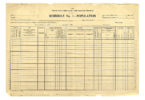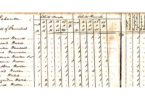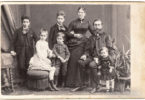The journey to uncover our ancestors' lives often begins with the countless paper trails they've left behind. Among these, census records stand out as one of the most valuable resources for genealogists. Covering the span from 1790 to 1950, these records offer glimpses into the past that help us paint a clearer picture of our forebearers' worlds.
Why Census Records Matter
A census is a governmental record of the population at a particular time. These records typically include names, ages, birthplaces, occupations, etc. For a genealogist, they serve as bridges to connect various dots in a family tree. Additionally, they help confirm theories or suspicions about family links, residences, or migrations.
Since 1790, the U.S. federal government has conducted a census every ten years. While each iteration contains unique attributes reflecting its era, they all provide insights into family structures, socio-economic statuses, and the cultural milieus of their times.
Navigating Census Records
While it may sound straightforward, navigating through almost two centuries of census data can be daunting. Here's a brief overview of what to expect from each era:
1790–1840: In these earliest censuses, the records only list the head of the household's name. However, they provide counts of individuals living in the household, segmented by age group, gender, and other categories, like free white males, free white females, other free persons, and slaves.
1850–1930: In 1850, census records began to include the names of all individuals in the household, not just the head. They also began to capture more detailed information about birthplaces, marital status, and occupations.
1940: This particular year provided more detail about the respondents' lives, including their residence in 1935 and the highest educational grade achieved.
1950: The 1950 census records were released to the public in 2022. These records offer even richer insights into mid-20th-century American life.
Interpreting the Data
As fascinating as raw data can be, it's the interpretation that provides valuable stories and insights. Consider these techniques:
Track migrations: By following a family or individual through consecutive census records, you can discern migration patterns across states or towns.
Observe household changes: The addition or disappearance of family members over the decades can indicate births, deaths, marriages, or moves.
Economic and social status: Changes in occupations, property ownership, and education levels can hint at the socio-economic journey of your ancestors.
Challenges and Limitations
As with any historical record, census data has its challenges:
Misspellings and Inaccuracies: Enumerators, or those who recorded the census, sometimes misheard names or made mistakes in recording.
Missing Records: Some census data has been lost or damaged over time. Notably, most of the 1890 U.S. Federal Census was destroyed in a fire.
Cultural and Racial Bias: Early censuses reflected their times' cultural biases and racial classifications. This is evident in how they categorized individuals by race or ethnicity.
Incorporating Census Data into Your Research
Cross-reference with other sources: Always use census data with other records, like birth or death certificates, to validate findings.
Collaborate with other genealogists: Sharing insights or ambiguities with others can provide clarity or lead to new avenues of exploration.
Stay Organized: As you navigate through the years, maintaining a systematic approach can help prevent overlooking crucial details.
Census records from 1790 to 1950 are indispensable tools in the genealogist's kit. They not only illuminate our ancestors' lives but also offer context for the times they lived in. With patience, persistence, and a touch of detective work, these records can reveal family histories waiting to be told.




